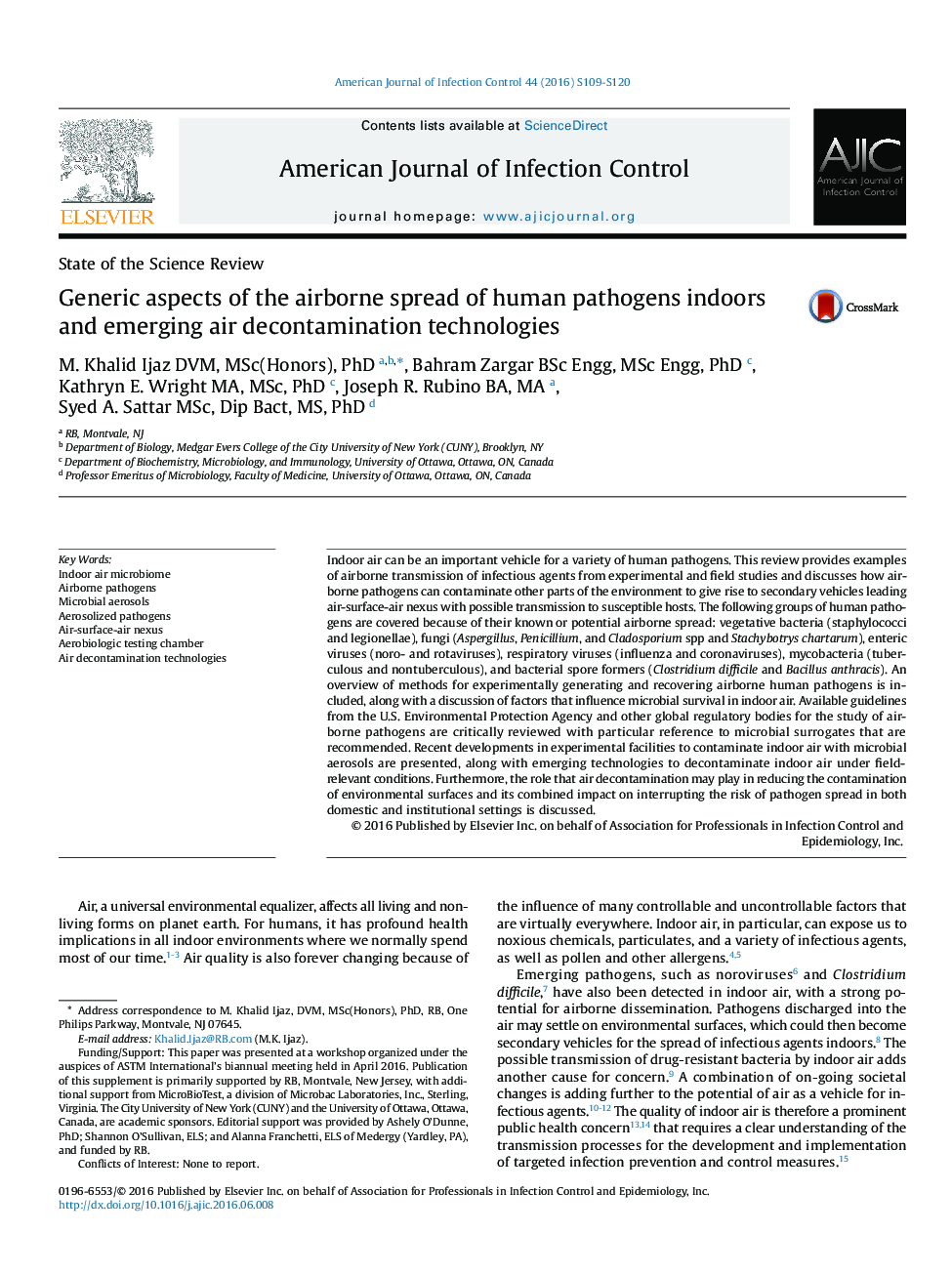| کد مقاله | کد نشریه | سال انتشار | مقاله انگلیسی | نسخه تمام متن |
|---|---|---|---|---|
| 2636664 | 1563454 | 2016 | 12 صفحه PDF | دانلود رایگان |
• Indoor air is an important vehicle for a variety of human pathogens.
• Review of airborne transmission of infectious agents from experimental and field studies, predisposing to establish air-surface-air nexus and possible ways of transmission to susceptible hosts.
• An overview of the methods for experimentally generating and recovering airborne human pathogens and environmental factors affecting their survival in air.
• Current and emerging technologies for decontamination of indoor air for human pathogens.
• Design, establishment, and validation of a room-size aerobiology chamber meeting the U.S. Environmental Protection Agency guidelines (2012) that can be used for assessment of air-decontamination technologies.
Indoor air can be an important vehicle for a variety of human pathogens. This review provides examples of airborne transmission of infectious agents from experimental and field studies and discusses how airborne pathogens can contaminate other parts of the environment to give rise to secondary vehicles leading air-surface-air nexus with possible transmission to susceptible hosts. The following groups of human pathogens are covered because of their known or potential airborne spread: vegetative bacteria (staphylococci and legionellae), fungi (Aspergillus, Penicillium, and Cladosporium spp and Stachybotrys chartarum), enteric viruses (noro- and rotaviruses), respiratory viruses (influenza and coronaviruses), mycobacteria (tuberculous and nontuberculous), and bacterial spore formers (Clostridium difficile and Bacillus anthracis). An overview of methods for experimentally generating and recovering airborne human pathogens is included, along with a discussion of factors that influence microbial survival in indoor air. Available guidelines from the U.S. Environmental Protection Agency and other global regulatory bodies for the study of airborne pathogens are critically reviewed with particular reference to microbial surrogates that are recommended. Recent developments in experimental facilities to contaminate indoor air with microbial aerosols are presented, along with emerging technologies to decontaminate indoor air under field-relevant conditions. Furthermore, the role that air decontamination may play in reducing the contamination of environmental surfaces and its combined impact on interrupting the risk of pathogen spread in both domestic and institutional settings is discussed.
Journal: American Journal of Infection Control - Volume 44, Issue 9, Supplement, 2 September 2016, Pages S109–S120
